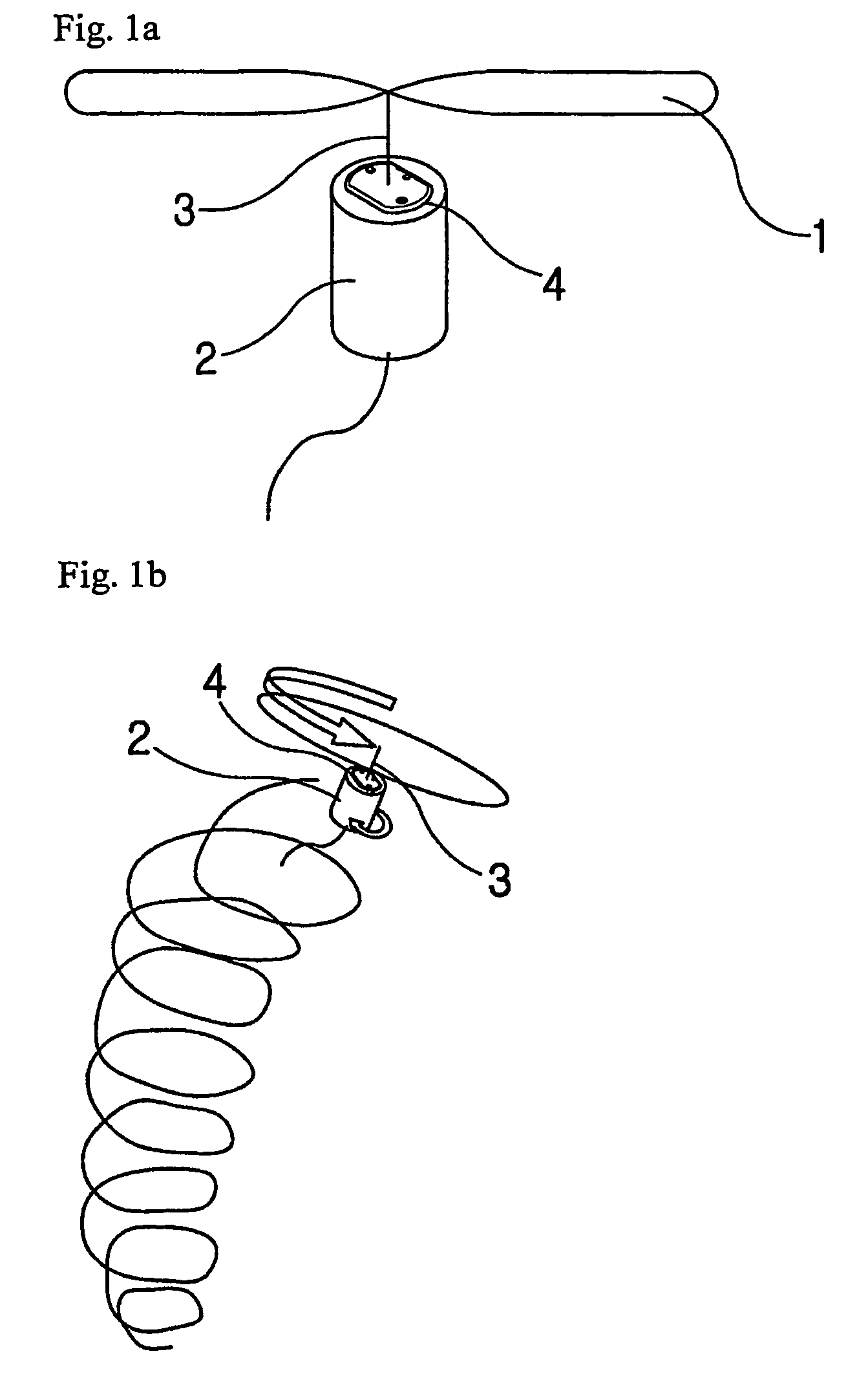Micro aerial vehicle
a technology of micro-aerial vehicles and rotors, which is applied in the field of micro-aerial vehicles with rotors, can solve the problems of vehicle crash on the ground, counterbalance reaction torque, and rarity of rc airplanes, and achieve the effect of counterbalance reaction torque and less expansiveness
- Summary
- Abstract
- Description
- Claims
- Application Information
AI Technical Summary
Benefits of technology
Problems solved by technology
Method used
Image
Examples
Embodiment Construction
[0038]From the below, we will take a look at preferred embodiment of our invention through the figures that are attached. These are only suggestive examples, not the exact outline which would limit the use of the invention.[0039]FIG. 2 is the three dimensional draft on the prototype of the micro aerial vehicle. As you see on the draft, pair of blades (12) shaped in airfoil is attached from hub (13) to the drive axle (15), and this drive axle is designed to spin as the rotor drive turns (16), which then will make the attached blades to spin. It is suggested that a motor to be used for rotor drive.[0040]It is unnecessary to describe the structure of blades, because they are designed in a traditional air foil form. It is shown in FIG. 2 that only a pair of blade is used, but number of blades could be varied. (3, 4, 5 and so on)[0041]As the rotor (11) turns, several blades in air foil shape also turns, and air above the blade would be sucked through the blades causing the body (17) to t...
PUM
 Login to View More
Login to View More Abstract
Description
Claims
Application Information
 Login to View More
Login to View More - R&D
- Intellectual Property
- Life Sciences
- Materials
- Tech Scout
- Unparalleled Data Quality
- Higher Quality Content
- 60% Fewer Hallucinations
Browse by: Latest US Patents, China's latest patents, Technical Efficacy Thesaurus, Application Domain, Technology Topic, Popular Technical Reports.
© 2025 PatSnap. All rights reserved.Legal|Privacy policy|Modern Slavery Act Transparency Statement|Sitemap|About US| Contact US: help@patsnap.com



